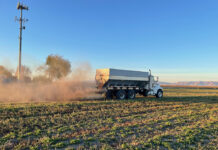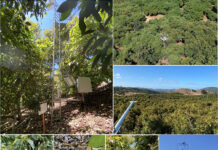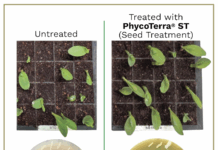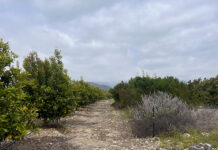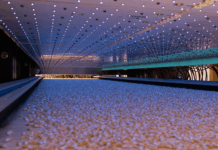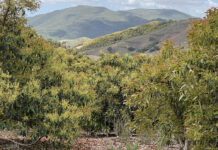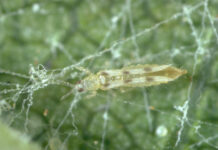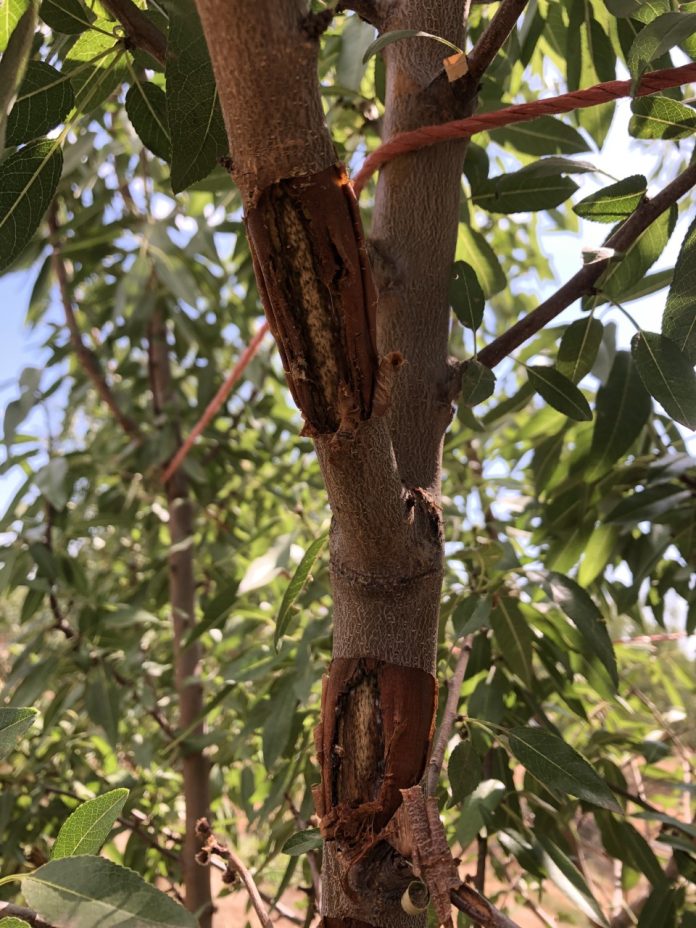
An investigation into mid-canopy wood peeling in young almond trees by Cameron Zuber, a UCCE staff research associate in Merced County, found pole harvesting to be the likely culprit.
Zuber reported that fresh peeling of tree branches was typically seen in the fall and winter periods. Only a small portion of the branch was affected, and they were mid-canopy branches. The peeling exposed a large area of the inner wood and there was concern that it could be a site of infection.
In September 2021, fresh peeling was observed in a third leaf almond orchard in Fresno County with peeling ranging from the bark to sap wood layers. The peeling was found in about a quarter of the trees on the outer and inner canopy branches. Zuber said the outer branches seemed to have more damage.
He said the damage was new as the orchard was under observation to collect information for almond production research. The orchard observations included walking the entire orchard site and working within the tree canopy. The peeling was not present until it was observed in September.
The puzzle was that no orchard activity had occurred in the orchard that could explain the wood peeling. When it was learned that harvest at the orchard was done with a poling crew using metal poles and tarps to collect the nuts, Zuber began to examine the practice. It was done, he said, due to the young age of the trees and concern about shaker damage. The research being conducted at the site also required that nuts be collected from specific sets of trees.
Given the timing of the pole harvest and peeling damage, this was the most likely cause. The height of the peeling also lined up with the main area the poling crew was hitting trees the hardest at.
The reason for the peeling may be due to the energy from a hard-hitting pole causing fractures to form parallel to wood fibers. Tension from the undamaged fibers pulled this fracture and an opening formed, thus exposing the inner layers of wood. If the pole harvesting caused this peeling, it provides insight into the fresh peeling seen at other locations during the fall and winter since poling is also used to perform sanitation.
Zuber said that the wood peeling possibly caused by the pole harvest in the summer does not tell whether pole sanitation in the fall or winter would result in the same type or amount of damage. The high amount of peeling from pole harvesting a third-leaf orchard was probably due to the suppleness of the wood due to the trees’ age, irrigation making the wood swell or a combination of the two, increasing the chance of damage from a pole.




